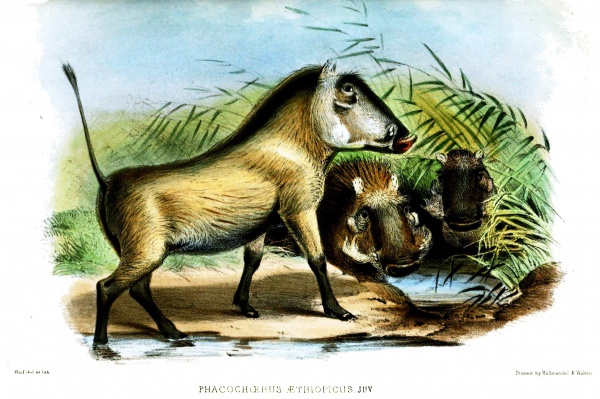Facts About Desert warthog
The desert warthog, also known as the Somali warthog in its native range, is a captivating species of even-toed ungulate that inhabits northern Kenya and Somalia. It may also be found in Djibouti, Eritrea, and Ethiopia. Interestingly, fossil records indicate that there were once two distinct evolutionary lines of warthogs. The lineage including the desert warthog went extinct in South Africa in the late 1800s. Detailed morphological studies have revealed that East African warthogs are the extant relatives of the now-extinct P. aethiopicus species.
Desert warthogs are easily recognizable by their stocky build, prominent facial warts, large tusks, and sparse coat of bristly hair. They thrive in open, arid environments, provided there are nearby water sources. Their diet primarily consists of grasses, plants, and fruits. These animals are social, living in groups called sounders, typically led by females. Males, however, are often solitary or form small bachelor groups. Breeding usually occurs during the rainy season, with females giving birth to two or three piglets in burrows.
One notable fact about desert warthogs is their ability to carry the African swine fever virus without exhibiting any symptoms, posing a potential threat to domestic pig populations. In some regions, efforts have been made to control warthog populations because they can host the tsetse fly, a vector for various diseases.
Despite being hunted for bushmeat and facing competition from domestic livestock, the desert warthog is currently listed as "Least Concern" on the IUCN Red List. This classification is due to their stable population and presence in protected areas.

 Ivory Coast
Ivory Coast